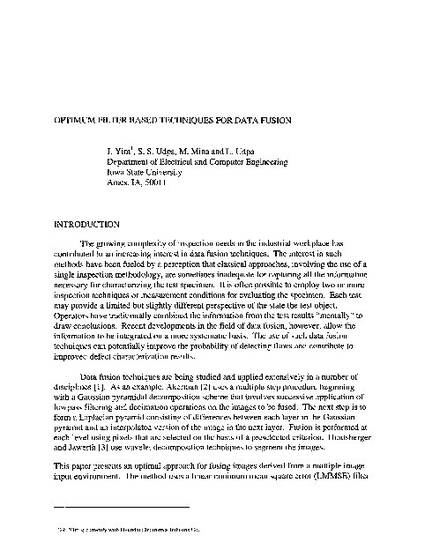
The growing complexity of inspection needs in the industrial workplace has contributed to an increasing interest in data fusion techniques. The interest in such methods have been fueled by a perception that classical approaches, involving the use of a single inspection methodology, are sometimes inadequate for capturing all the information necessary for characterizing the test specimen. It is often possible to employ two or more inspection techniques or measurement conditions for evaluating the specimen. Each test may provide a limited but slightly different perspective of the state the test object. Operators have traditionally combined the information from the test results “mentally” to draw conclusions. Recent developments in the field of data fusion, however, allow the information to be integrated on a more systematic basis. The use of such data fusion techniques can potentially improve the probability of detecting flaws and contribute to improved defect characterization results.
Available at: http://works.bepress.com/mani_mina/3/
